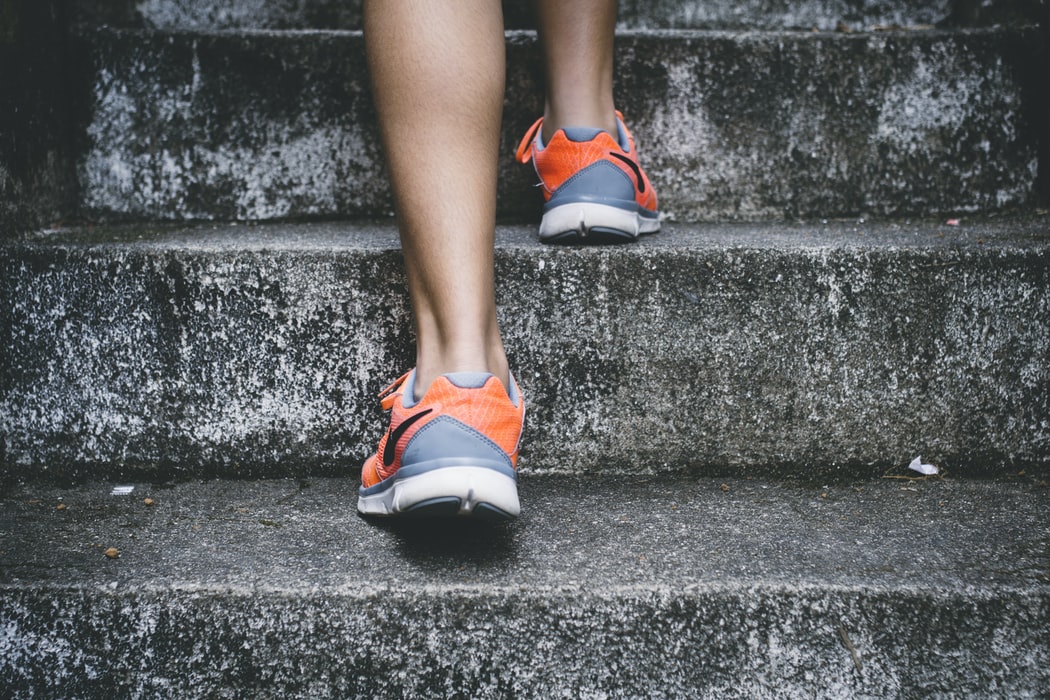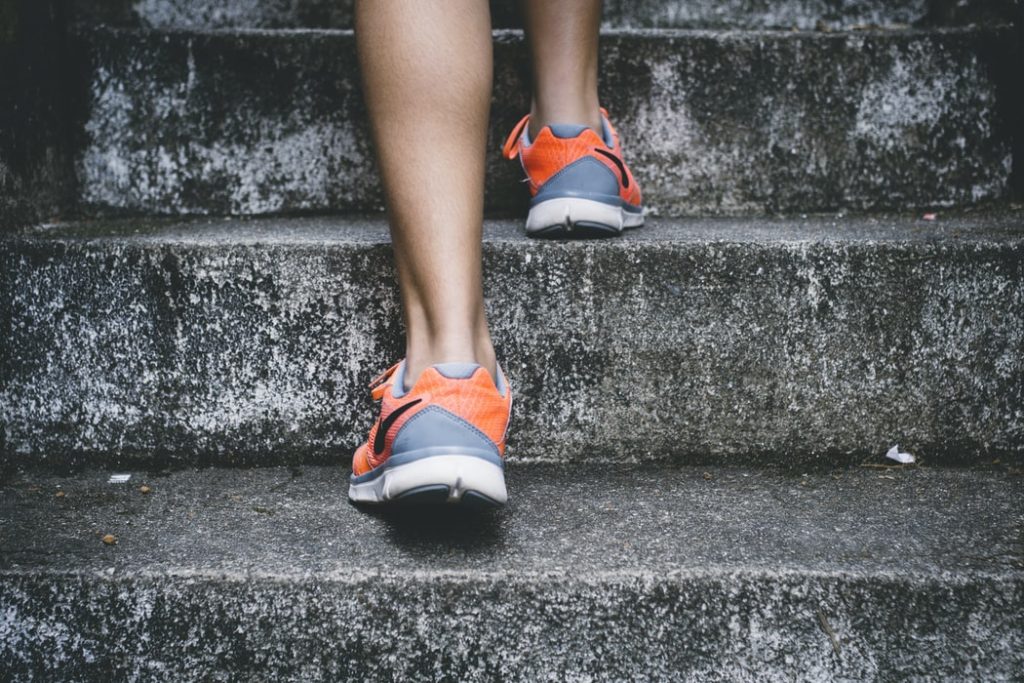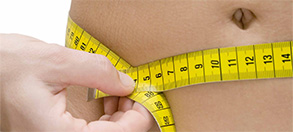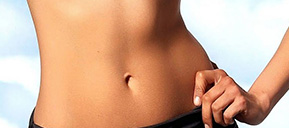It may sound like a complicated concept, but a low energy density diet may secretly be one of the easiest diets to manage. Energy density is the idea that the food we eat has a certain amount of energy (calories) in a certain amount of weight (grams). The more energy per gram, the more calorie-dense a certain food is. Eating a diet full of foods with low energy density (below 1.5 cal/g) has proven useful in losing and maintaining weight.
Foods and Energy Density
The number of calories we can eat every day can vary quite a lot. However, research shows that people generally eat a consistent amount of food each day. That means you might consistently eat about three or four pounds of food every day, regardless of how many calories you consume. Your total calorie intake could vary dramatically depending on the energy density of your food.
In general, a food that is at or below 1.5 cal/g is considered to have low energy density. That means it doesn’t have more than 1.5 calories for every gram of food (that’s 42.5 calories per ounce).
Let’s look at the energy density of some common foods.
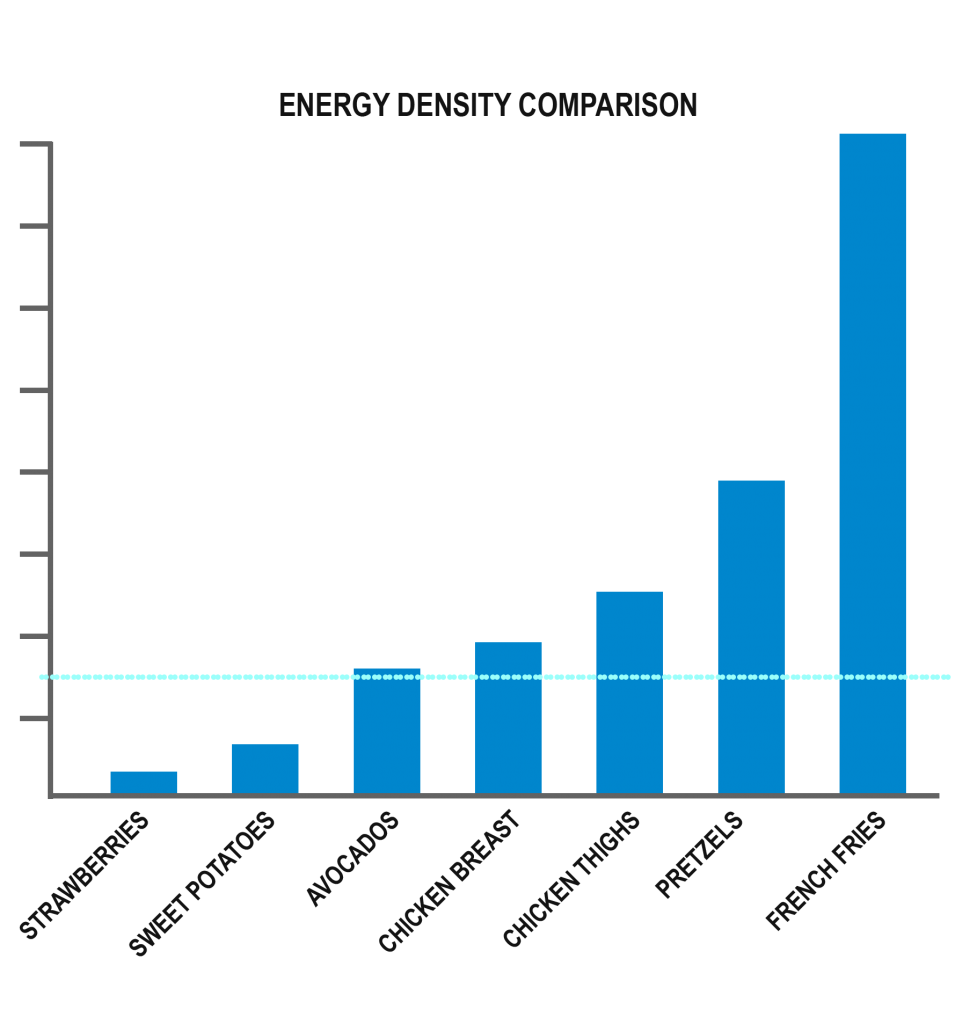
You probably already know about the types of macronutrients – carbohydrates, protein, fat, and fiber. As you can see, most of the foods with low energy density are higher in fiber and have a lot of water content. Even “healthy” snacks like pretzels pack a lot of calories (energy) into a small amount of food. It may come as no surprise that many foods with low energy density also happen to be low-calorie, high-fiber foods you’ve been told to eat before. Energy density is just another way of looking at food while factoring in weight rather than total calories.
In addition to carbohydrates, protein, fat and fiber, energy density also asks us to look at water content.
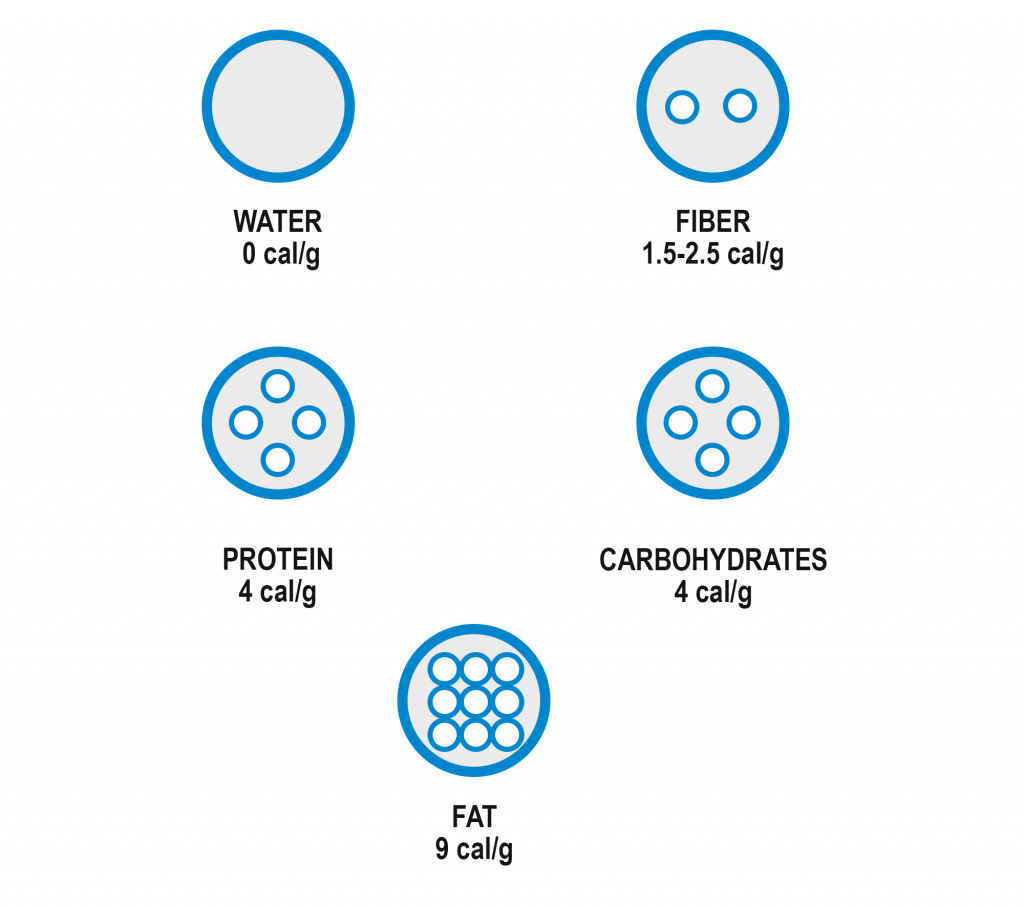
How to Measure Energy Density
You may be wondering whether a diet of only low energy density foods is just going to contain fruits and vegetables. Are chicken thighs at 2.45 cal/g forbidden? Fortunately, the answer is no.
While individual foods have their assigned energy density, it’s more helpful to look at meals as a whole. For this, you can turn to a nutrition label or if you’re cooking at home, your favorite app or website. It does take some work initially to figure out how many calories are in a meal, but once that’s done it’s easy to use a standard food scale to find out the energy density of the meal.
Let’s say you have 100g of chicken thighs and 100g of strawberries (just as an example). The total energy density of this somewhat strange meal is 1.43 cal/g – that makes it a low energy density meal!
It’s important to note that you don’t need to be weighing every meal to lose weight by eating low energy density foods. Simply identifying the foods you should eat more of and incorporating them into your diet will help reduce your overall calorie intake and improve your eating habits without having to stress over every meal.
If you want to be strict about it, then doing a low energy density diet can still be a fair amount of work and require meal planning. The benefit is that you won’t have to count your total calories eaten every day. By choosing low calorie density foods, you’ll have already reduced your total calories.
Using Energy Density to Eat More while Losing Weight
The energy density diet flips the script on a normal diet. Instead of focusing on what not to do, it focuses on what you should do. So rather than saying, “eat less fat and carbohydrates” or “reduce your total calorie intake,” a low energy diet says, “eat more fruits and vegetables, and foods higher in fiber.” By eating more of these foods, you’ll naturally eat less calories.
An energy density diet won’t track calories, instead you’ll track the overall density of the food you’ve eaten and choose food with a low energy density, while eating higher energy density foods in moderation. The ends result is that you may eat more food by weight but eat fewer total calories.
There are several studies that have measured the effect of low energy density foods. For example, one study found that eating a low energy density soup or salad prior to a meal resulted in eating less overall. Even though they ate less calories, the participants still said they felt full and satisfied.
Feeling hungry while dieting is a huge problem and one of the many reasons that people fail to stick to a weight loss plan. If this is a concern for you, a low energy density diet can help.
Energy Density vs. Nutrient Density
One of the common problems on a very low-calorie diet is that dieters might not be getting the nutrition they need to stay healthy. There can often be a big difference between what is healthy versus what is good for weight loss. A weight loss diet like Atkins that reduces all carbs, including vegetables, may not contain enough vitamin B, folic acid, or other necessary nutrients. This can lead to poor overall health despite good weight loss. However, the opposite is also true. Focusing on nutrition density alone can lead to unwanted weight gain, no matter how nutrient-packed that grains bowl with avocado is.
Energy density is a good way to ensure that you’re eating lower calories while also maintaining a good amount of nutrients in your diet. Low energy density foods like fruits and vegetables tend to also be nutrient-dense. By focusing on what you should eat instead of what you should not, proper nutrition and a reduction in calorie intake can be achieved simultaneously.
Tips for Eating Low Energy Density
It Doesn’t Have to Be Exact – Energy density is a good way to lose weight, but you don’t need to start by counting every calorie. A great way to get started is just to add in some low energy density foods to the meals you already eat. This will help increase fullness and improve overall eating habits without the added stress of tracking numbers and meal planning.
Picky Eaters Be Warned – If you create meals with fruits and vegetables and then eat around them, you’re not going to get any of the benefits. This is one diet that requires eating the food in front of you. The low energy density diet assumes you’re eating all the items on your plate evenly.
Eat Until You’re Full – This is a tricky one, because what “full” means can vary from person to person (it doesn’t mean you can’t eat another bite). Despite what your parents may have said, it’s okay to leave food on your plate.
Beverages (Don’t) Count – One exception to the energy density rule is that beverages don’t have much if any effect on feeling full. That means that sodas, sports drinks, and whole milk, even though they may technically be low energy density aren’t considered part of a low energy density diet. Even a glass of water with a meal hasn’t been shown to effect fullness. However, turning a meal into a soup instead of a plate has shown to reduce the number of total calories eaten while still feeling full.
Cooking Methods Matter – Besides the obvious high-fat cooking methods like deep frying or using butter and oil, energy density asks you to also look at the water content of your food. Cooking in ways that eliminate moisture can increase the energy density of your food, while methods like steaming and boiling will help ensure you eat less calories while still feeling full.
